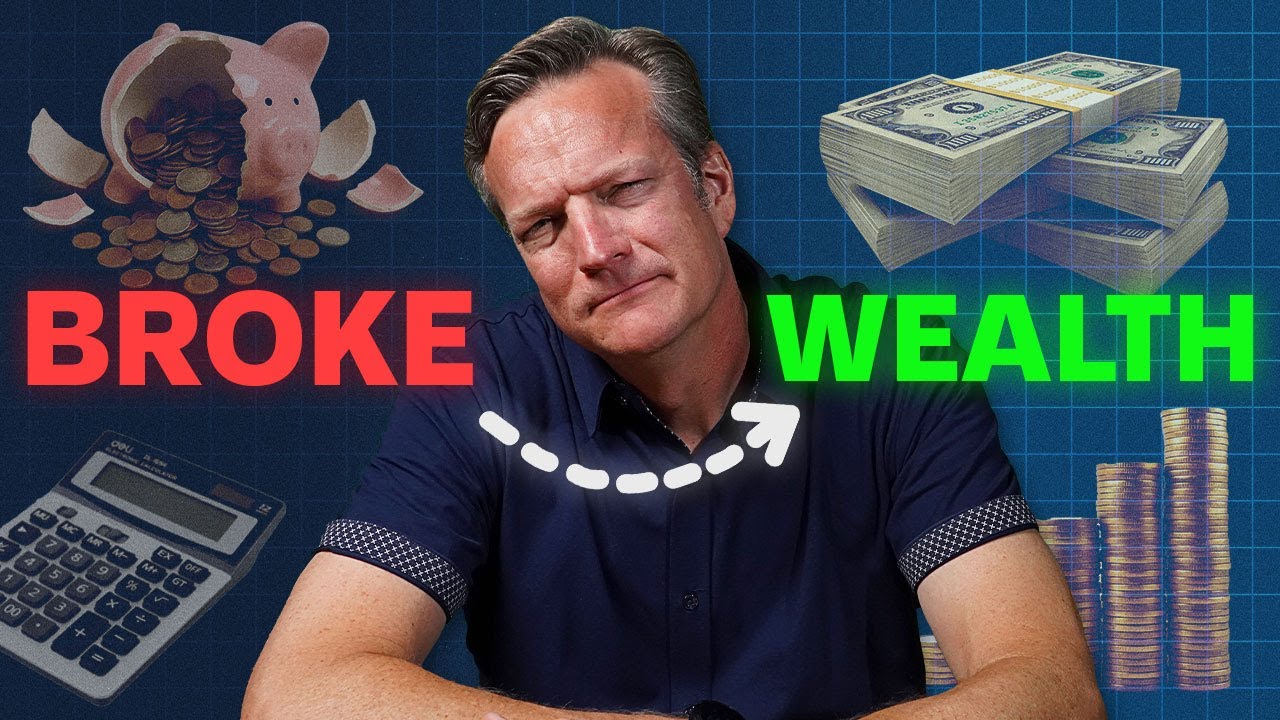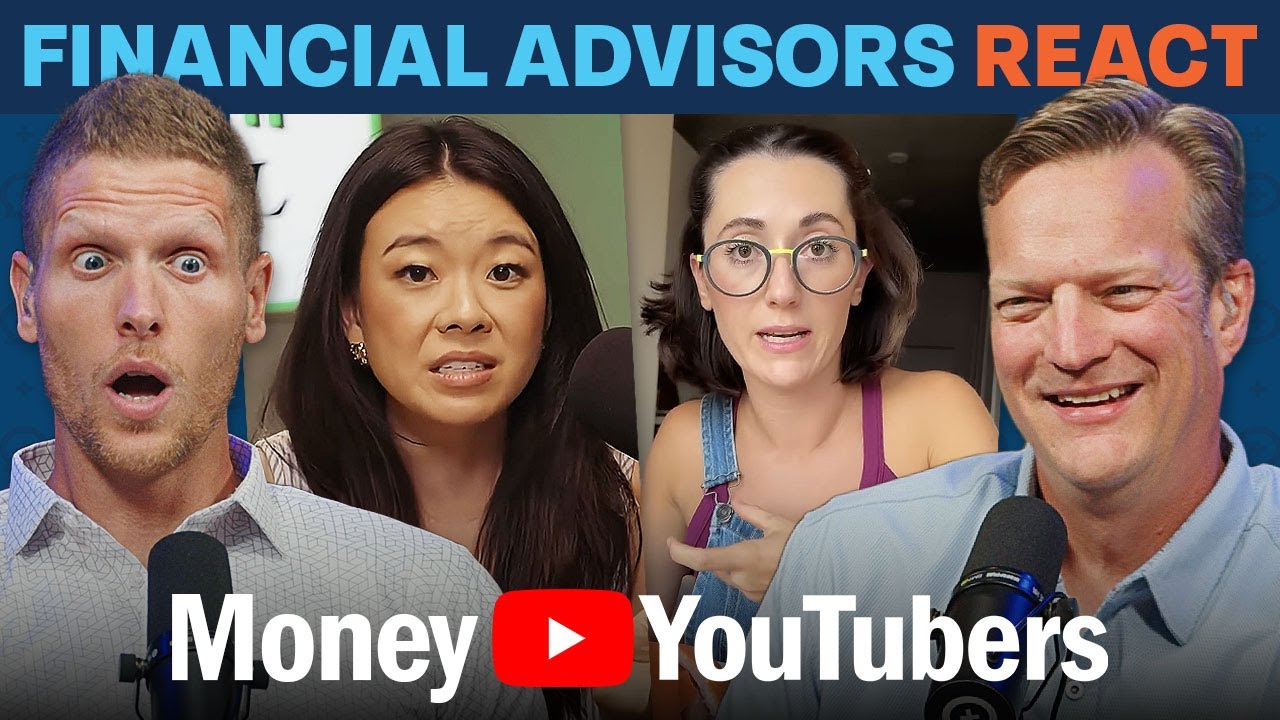All right, Brian, so you’re out there listening to this and you’re saying, “Okay, guys, I’m in. I’m sold. I want to do this. What about the blocking and tackling? How do I actually do this? Where do I actually invest?”
Well, if you think about your banking circumstance just like you have checking accounts and savings accounts, they are held at an institution, and you can hold your accounts at an institution. And we love using custodians like Fidelity. It’s a low-cost provider, like Charles Schwab. It’s a low-cost provider, like Vanguard. It’s a low-cost provider, where you can use one of these large companies to go open up a specific type of investment account that you can start utilizing and you can start investing in. Now, there are other companies out there, and they do tons of marketing, tons of advertising like Robinhood, or Acorns, or Weeble, and you’ve seen or heard people investing through there. And while there’s not anything inherently wrong with that, you just need to recognize those types of companies, those types of institutions are different than the large custodians like the Fidelity, like the Vanguard, like the Charles Schwab. So, I would think through when I go to open my first investment account, when I go to start investing, who do I want to use, who do I want to utilize? That’s going to be the place where I can know that when I open the account, it’s going to be easy, it’s going to be seamless, and I can get my dollars working for me into the future.
And I do know some of these newcomers have some creative things they’re doing, like even matching funds. Like, I know Robinhood does some matching funds. But do be aware that during some of the meme stock trading stuff that went on, some of these smaller upstarts had some growing pains. From the meme stocks, not that you’re even investing in that type of stuff, but I’m just telling you, it just shows how these companies that are doing innovative stuff, sometimes they’re still figuring it out. And that’s why when you named off the three providers, we don’t get anything from Schwab, Fidelity, or Vanguard, it’s just they’re more of the standards out there in the marketplace. But they’re also not doing some of those creative things like the matching funds. So just be aware, do your research, and choose the one that’s low-cost, easy access, and maybe even look at which one is going to give you the dashboard like the better app and those types of things.
I just want to make sure that you’re consistent and always be buying and you, this habit, this good habit, becoming super easy is what sticks and creates your future success. Okay, so you picked a provider, now you got to decide, okay, what kind of account do I open? I want to start investing, but what are the accounts that I need to know about and what might make sense for me?
Well, the very first one, especially for young people that we would encourage you to start thinking about, at least to be familiar with, is a Roth IRA. I would argue this is probably one of our favorite accounts to save for future retirement dollars. Well, yeah, because this is gross tax-free. That’s right. I mean, it’s one of those things where we all know death and taxes are pretty much guarantees. So then this product or this account type comes along that says, “Hey, no, we’re going to let you put money into this account and it grows completely tax-free.” So when I talk about a dollar for a 20-year-old has the potential to become $88 at retirement, this is talking about you never paying taxes on those $87. That’s really powerful stuff.
Now, there’s a reason. If you want proof that this is powerful, the government restricts how much you can put in. The government restricts how much money you can make before they cut off this benefit. There are restrictions that show you that this must be something pretty good. Get in there and take advantage of the tax-free growth. And that’s why there are restrictions. Currently in 2024, you can put $7,000 a year into these Roth IRAs. If you are 50 and over, you can put $8,000. Take advantage of those limitations because that means that they’re trying to provide you an incentive to be an active participant in your future success.
What I think is great is even if you’re someone who’s young and maybe you just have a part-time job, maybe you just work at a local restaurant or you’re doing something where you get a W2 at the end of every year, if you have earned income and you’re below certain income thresholds, which for single folks it doesn’t happen to like $140,000, you can actually save in a Roth IRA. This isn’t something where you have to be out of school or have a career or have a full-time job. If you have earned income, you can open up a Roth IRA and you can start saving $20 a month and you can start watching your tax-free dollars grow, which is absolutely amazing. So, Roth IRAs are an account type, an account that we love.
Now, another account that I just think is worth mentioning, now this probably won’t be one that you get to open on your own, but it’s one that most people have access to, is your employer-sponsored retirement account, your 401k or 403b at your employer. Yeah, what I like about this and 69% of you have access to a work-based employer plan, and this is actually the most likely candidate of your accounts that’s going to cross seven-figure status. And the reason, and it’s a reason why in the financial order of operations, we made it a step two, is that more than likely, your employer is going to be so energized in getting you to fund this account that they’re going to give you free matching dollars to participate. So, you can imagine if a dollar can turn into $88, how valuable is $1 turning into… What is the math on that? $176. I mean, that’s what it is. If you are putting in a dollar, your employer putting in a dollar, that $1 has the potential to become $176. Make it happen. That’s valuable stuff.
Now, when it comes to the 401k or 403b, again, your company is going to choose a provider. So, they might have a 401k that’s with Fidelity or with Vanguard or with Charles Schwab. But you will have some decisions you get to make, like you’ll get to choose, should I do traditional for contributions, should do Roth? If I do traditional contributions, that money goes in pre-tax and I get a current year tax benefit, but in the future, when I go to pull those dollars out, I’ll have to pay tax on them. If I do the Roth portion, I don’t get a tax benefit this year, but those dollars go into the 401k or into the 403b, and they grow tax-free, which is a huge, huge benefit.
Now, these accounts, some of the Roth, they also have contribution limits. You can fund up to $23,000, or if you’re older, you can get into bigger funding limits than just the Roth IRA. But I also love that you can do a Roth 401k or Roth 403b. So if you are young and in a low-income tax bracket, take advantage of that tax-free growth. That’s a very valuable opportunity. And then Brian, you already said this, you might get free money. A lot of employers offer employer matching. You cannot walk away from this. It’s why we put it so early in our financial order of operations. And if you want to know more about 401ks and you want to know more about how you can utilize them and how they can be part of your financial journey, we do an entire show every year called Average 401K by Age. We have our 2023 version out that you can go check out right now that will say, ‘Hey, if you’re in your 20s, this is what you should be thinking about when it comes to your 401k. This is how you should be looking about it if you’re in your 30s, same thing, 40s, 50s, and so on, because it is a huge, huge tool that you can be using in your financial toolkit.
Now, if you’ve talked about a lot of retirement or tax-favored accounts like the Roth accounts, the employer-provided accounts, but what if you’re somebody who doesn’t? Maybe you’re starting out, something for your kids, or you’re starting out, you don’t have earned income. We ought to talk about taxable brokerage accounts or custodial accounts. These types of things, these are if you just have money that you want to put to work. You can always set up an individual or a joint or custodial brokerage account and start your, let your money start working for you.
Yeah, when people talk about brokerage account, they say, ‘I have a brokerage account.’ This is most often what they’re talking about because there are no limits or no restrictions for you to be able to open it. There’s no contribution limit, no income thresholds. And this is a great place for anything that’s longer-term. Maybe you’re thinking about buying a house in the future, you want to save for an automobile that’s going to be more than seven years in the future, you’re saving for a wedding, you’re saving for expenses for your children that you’re never going to have, or a second home, anything like that. A taxable brokerage account is a great solution. And you can put in as much as you want to every year and you can pull the money out whenever you want. So it doesn’t have the same restrictions like Roth IRAs or 403bs or 401ks. Taxable brokerage accounts are great brokerage accounts that you can utilize that can serve as a bridge inside of your financial picture.
Now, I hate to add complexity because we’re going to add another account type. And that’s why don’t worry if you’re like, ‘Holy cow, I thought these guys were giving me the intro on how to do this.’ I’m going to give you the guide that’s going to answer all your questions, kind of serve as the skeleton key to unlock all this. But we’d be remissed if we didn’t tell you about health savings accounts. We love these accounts because they’re triple tax advantage. They’re for medical expenses. And if you don’t need them for medical expenses at retirement, they’re actually closeted or, you know, hidden retirement accounts because you can actually use them for outside of healthcare post-65. But we love that you get a tax deduction for the contribution. They grow tax-deferred all those years. And if you use them for those qualified medical expenses, you actually get to pull the money out tax-free growth included. But they do require you to have a high deductible health insurance plan. So this is not fair everyone. You do have to have those health insurance plans that require you to kind of fund a little bit more, have skin in the game on the front part of the process. And the government incentivize all these tax savings if you are setting up those health savings accounts. And these could be provided by your employer. Employers may make it available where you can have access to HSA. But even if your employer doesn’t and they don’t have an HSA that you can open with them, if you are subject to a high deductible plan, you can go open this up on your own. And a lot of big providers like Fidelity now make these accounts available. And what’s great is they have contribution limits as well, but they’re pretty big. For single folks this year, you can do up to $4150, and for families, you can do up to $8,300 into these accounts. So if you’re a family and you’re thinking about $8,300, that is $8,300 that is triple tax advantage. So make sure you understand if you have access to this account, it might make sense.
Now, Brian, here’s the question. We just went through all these accounts. We went through the retirement accounts, the Roths, the 401ks, the taxable HSA, it’s it’s it’s a plethora. How do I know what and when and how to choose what type of account?”
“I think it’s important because when we talked about Roth, we talked about employer-provided, you can buy index funds in those, you can buy index Target retirement funds and all of those different account structures. So that the account is really just the vehicle that holds the structure. So you’re trying to figure out when do I do which one first? Where does it fall? And that’s why we do have the financial order of operations. If you go to Money.com resources, you can download your free copy. And this is going to walk you through each of the nine steps so you know, ‘Hey, look, like step number one, let’s get my highest deductible covered. That way I can keep my financial life out of the ditch. Then, hey, I heard Brian and Bo talking about that at Dollar when your employer puts another dollar on top of it. Man, we just guaranteed the performance and double-charged, you know, turbocharged the performance. Let’s get in and get that free money. Then let’s avoid high-interest debt right now. Credit cards are charging somewhere between 25 and 30% interest. You’re never going to get ahead if you’re paying 25 and 30%. So we got to pay it off. Emergency reserves, this is just going back to getting more emergency reserves, 3 to 6 months. Let’s lean towards that. But then look where we are after you get those emergency reserves. We’re off to the races. There’s where your Roth IRA, that’s where your health savings account, those tax-free growth opportunities. Then we go over to max out retirement with step six. That’s where we’re going to lean into all those tax-favored investments, including your employer plan. And then step seven, this is when we’re starting to think about, ‘Hey, maybe we got to start thinking about how we’re actually going to pull this money out in the future, the three-bucket strategy and other things. Then when you get to step eight, now we can think about the kids, we can think about investing in rental property, we can think about abundance goals. Maybe this is when we buy the nicer car. And then of course, step nine is this is when we’re going to pay off that low interest interest mortgage and be completely debt free as we enter Financial Independence. If you want to know more about this, if you want to download your free copy, you can go to MoneyGuide.com resource. Or if you want to do a deep dive into the financial order of operation to understand the hows and whys behind those nine steps, you can go to learn.money.com to learn all about it.













